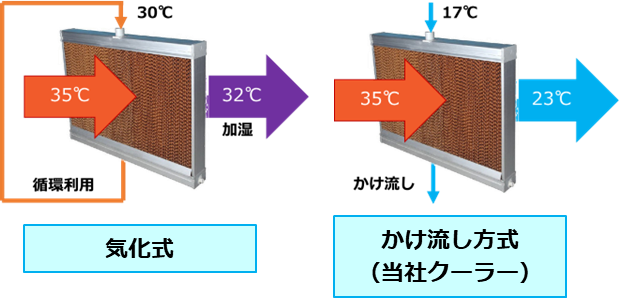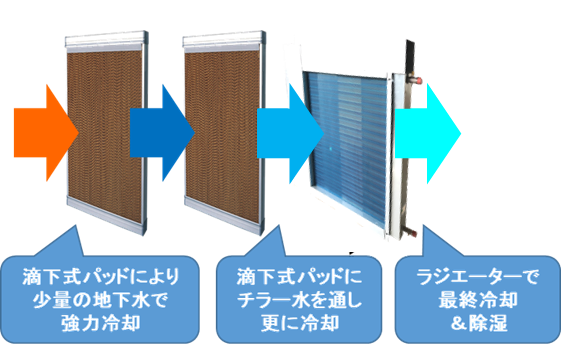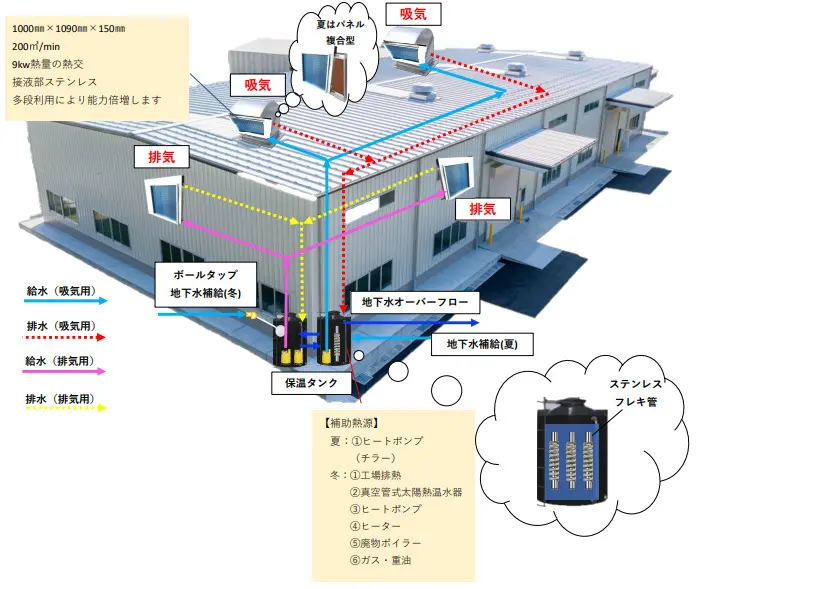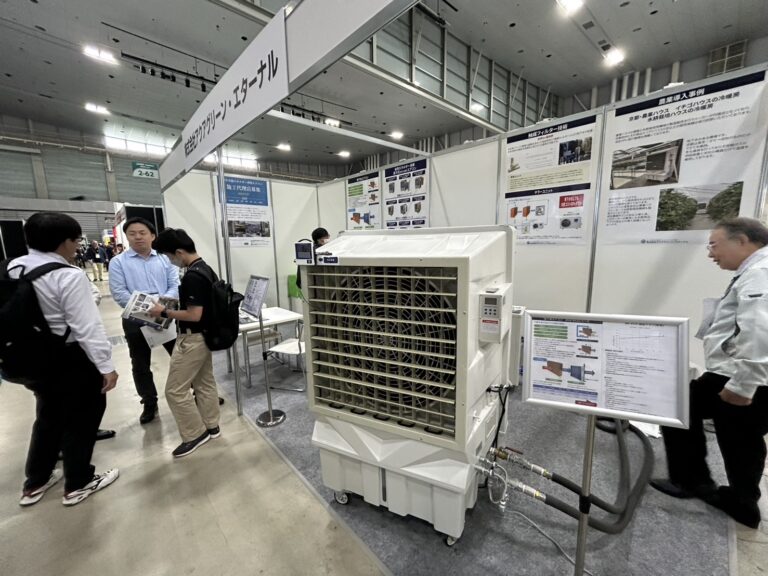Renewable energy with multi-stage heat exchange unit New energy-saving air conditioning using geothermal heat

<Air conditioning in the COVID-19 era that requires both mass ventilation and energy conservation: Groundwater air conditioning>
Since the start of humanity's fight against the new coronavirus, there has been a call for thorough "ventilation" in the air conditioning field. Increasing ventilation significantly increases air conditioning capacity and energy costs. The challenge for air conditioning in the COVID-19 era is how to ventilate while keeping costs down and saving energy.
Our company has been developing and selling ultra-energy-saving air conditioning that uses groundwater, a renewable energy source, as its heat source. In Japan, groundwater is stable at around 15°C regardless of the season, and can be used as a cooling source as is. For heating, too, significant energy savings can be achieved by using it directly as a supplement or indirectly as a heat pump heat source. For example, when comparing the cooling costs of a typical commercial air conditioner and a groundwater cooler, the groundwater cooler costs only about 1/10th of the cost.

It can supply a large amount of cool air while consuming very little power. This characteristic makes it ideal for modern air conditioning, which requires large amounts of ventilation. However, there have been some issues, including some misunderstandings, that have prevented it from becoming widespread.
Problems with groundwater air conditioning: Securing groundwater and water quality
First of all, there is the issue of securing groundwater and its quality. Can groundwater be secured stably? Also, will there be any issues with iron and minerals clogging the pipes and causing corrosion? Our engineers have been able to use the know-how they have gained from working on groundwater utilization systems for many years to assess the stability of groundwater and introduce our own water treatment technology, which has enabled us to largely resolve these issues.
Problems with groundwater air conditioning 2. Water volume and humidity
Next, there is the issue of water volume and humidity. A commonly known type of air conditioning that uses water is an evaporative cooling fan. This method circulates room temperature water and uses the latent heat generated by evaporation to lower the temperature. However, with this method, the more the air conditioning is turned on, the higher the humidity becomes. There are also hygiene issues.
Our drip-type groundwater cooler can solve the problem of groundwater air conditioning.
We have developed two main types of groundwater cooler systems that use renewable energy, one of which is the "drip type (flowing type)" which is similar to an evaporative air cooler. The uniqueness of this system is that it uses flowing groundwater. Not only is it hygienic, but the air comes into direct contact with the cold groundwater, allowing for efficient cooling. The amount of evaporation is also overwhelmingly less than that of an evaporative air cooler, making it very comfortable. The amount of water used is also extremely small, and it can be operated with a small amount of groundwater.

<Ideal ultra-energy-saving ventilation and air conditioning using a unique multi-stage heat exchange unit>
In addition to the "drip type," there is another groundwater air conditioning method that uses renewable energy, known as the "radiator type." This method indirectly exchanges heat by passing natural groundwater, which is a source of energy, through a highly corrosion-resistant radiator. Although it requires a larger volume of water than the drip type, the discharge temperature is lower and, above all, it has a higher dehumidifying effect. The radiator type has been used in some groundwater air conditioning systems, but issues include durability and the large amount of water used. In our case, we overcame the former issue by using materials and water treatment technology, but there was a limit to how much water could be improved in terms of water consumption.
Therefore, what has been developed in recent years as an ideal groundwater air conditioning method is the "multi-stage heat exchange unit" that combines the features of both the drip and radiator types. The following diagram shows an example of multi-stage use. First, the drip pad in the first stage uses a small amount of groundwater to quickly lower the temperature. Then, the radiator pad finally cools and dehumidifies to the level of an air conditioner. This combination makes it possible to provide air conditioning equivalent to an air conditioner with a large air volume using only a small amount of water and minimal electricity. Because it uses so little water, it can be operated with a small chiller even in areas where groundwater is completely unsuitable. Furthermore, the radiator type can use any other heat source, and can even be used for heating while utilizing renewable energy such as waste heat and solar heat.

Air conditioning using this multi-stage heat exchange unit is being introduced in various factories and large facilities, overturning conventional wisdom about air conditioning design.Currently, multi-stage heat exchange units that incorporate the idea of total heat exchange and recover exhaust heat are also being developed.
Please leave the air conditioning design using renewable energy to us.
The optimal air conditioning design method varies from facility to facility, and the above general outline alone is not sufficient. In particular, our company designs from the heat source itself, and we try to propose the optimal multi-stage heat exchanger depending on the operating conditions. If you are interested, please feel free to contact us.
Image of a factory intake and exhaust heat recovery system



